Biofeedback: Using your mind to improve your health
By Mayo Clinic staff
Have you ever wished you could simply will your symptoms to disappear? With biofeedback you may be able to do just that by harnessing the power of your mind to help improve your health.
Biofeedback defined
Why it's done
Biofeedback may appeal to you for several reasons:
Risks of biofeedback
What you can expect
Types of biofeedback
Finding a biofeedback therapist
Results of biofeedback
SA00083
Jan. 25, 2008
By Mayo Clinic staff
Have you ever wished you could simply will your symptoms to disappear? With biofeedback you may be able to do just that by harnessing the power of your mind to help improve your health.
Biofeedback defined
Biofeedback is a type of complementary and alternative medicine called mind-body therapy. It's designed to enable you — in mind-over-matter fashion — to use your thoughts and will to control your body. Biofeedback is based on the idea, confirmed by scientific studies, that people have the innate potential to influence with their minds many of the automatic, involuntary functions of their bodies.
To help you develop this ability, a biofeedback specialist uses signals from special monitoring equipment to teach you to control certain body functions and their responses, such as:
- Brain activity
- Blood pressure
- Muscle tension
- Heart rate
- Skin temperature
- Sweat gland activity
You can use biofeedback to help treat many physical and mental health problems when you've learned to recognize and control these functions and responses.
Biofeedback can be particularly useful in treating stress-related conditions, and clinical trials are evaluating it in the treatment of many other conditions, including:
- Asthma
- Headaches
- Hot flashes
- Raynaud's disease
- Irritable bowel syndrome
- Nausea and vomiting associated with chemotherapy
- Irregular heartbeats (cardiac arrhythmias)
- Chronic low back pain
- Chronic constipation
- High blood pressure
- Incontinence
- Epilepsy
Biofeedback may appeal to you for several reasons:
- It may reduce, or even eliminate, your need for medication.
- It has the potential to help conditions that have not responded to medication.
- It helps put you in charge of your own healing by providing measurable feedback, which allows you to monitor your progress and learning.
- It may decrease your medical costs.
Risks of biofeedback
Biofeedback is generally considered safe. It should generally not be used, however, if you have depression, psychosis, or another major mental health disorder. Biofeedback can potentially interfere with some medications, such as insulin, so patients with diabetes should exercise extra caution. Talk to your doctor to see whether biofeedback therapy is an appropriate treatment for you.
What you can expect
You can receive biofeedback training in physical therapy clinics, medical centers and hospitals. A growing number of feedback devices and programs are being marketed for home use as well. But working with a therapist, initially, may provide the best long-term results.
Preparation depends on the type of biofeedback therapy used. A typical biofeedback session lasts 30 to 60 minutes. The length and number of sessions will be determined by your condition and how quickly you learn to control your physical responses.
During a biofeedback session, a therapist will apply electrical sensors to different parts of your body. These sensors will monitor your body's physiological response to stress — for instance, your muscle contraction during a tension headache — then feed the information back to you via cues such as a beeping sound or a flashing light. The feedback will allow you to begin to associate your body's response — in this case, headache pain — with certain physical functions, such as your muscles tensing.
Once you begin to recognize that your headache is a result of tense muscles, the next step is to learn how to invoke positive physical changes in your body, such as relaxing those specific muscles, when your body is physically or mentally stressed. Your eventual goal will be to produce these responses on your own, outside the therapist's office and without the help of technology.
Types of biofeedback
Your therapist may use several different techniques to gather information about your body's responses. Determining the one that's right for you will depend on your particular health problems and objectives. Machines and techniques include:
Electromyogram (EMG). An EMG uses electrodes or other types of sensors to measure muscle tension. By the EMG alerting you to muscle tension, you can learn to recognize the feeling early on and try to control the tension right away. EMG is mainly used to promote the relaxation of those muscles involved in backaches, headaches, neck pain and grinding your teeth (bruxism). An EMG may be used to treat some illnesses in which the symptoms tend to worsen under stress, such as asthma and ulcers.
Temperature biofeedback. Sensors attached to your fingers or feet measure your skin temperature. Because your temperature often drops when you're under stress, a low reading can prompt you to begin relaxation techniques. Temperature biofeedback can help treat certain circulatory disorders, such as Raynaud's disease, or reduce the frequency of headaches.
Galvanic skin response training. Sensors measure the activity of your sweat glands and the amount of perspiration on your skin, alerting you to anxiety. This information can be useful in treating emotional disorders such as phobias, anxiety and stuttering.
Electroencephalogram (EEG). An EEG monitors the activity of brain waves linked to different mental states, such as wakefulness, relaxation, calmness, light sleep and deep sleep. EEG may be used to treat insomnia, epilepsy and other neurological disorders.
Look for a qualified therapist if you decide to try biofeedback. Many biofeedback therapists are licensed in another area of health care — for instance, as a registered nurse or physical therapist — and may work under the guidance of a doctor. Some biofeedback therapists attain certification from the Biofeedback Certification Institute of America (BCIA). You may obtain a list of names of people in your area who have been certified by the BCIA by contacting the organization.
Gather information about each of the potential therapists you identify prior to making an appointment. Ask the therapists to provide references, whether they are licensed in biofeedback or another health care field, and what experience they have treating your specific condition and symptoms. If you can't find a BCIA-certified therapist in your area, ask your doctor or another health professional with knowledge of biofeedback therapy to recommend someone who has experience treating your condition. Check, too, on whether your health insurer will cover the cost of treatment.
Experts aren't entirely sure how the biofeedback therapy works. Many people who've tried it can't explain how they're able to control their bodies, yet experience improvement in their symptoms. Biofeedback may enable you to reduce the amount of medication you take, or even help a condition that hasn't responded well to medication.
Keep a daily diary to monitor your use of the treatment as well as how you feel before, during and after the therapy to assess whether biofeedback is effective in treating your particular symptoms. By learning to control your involuntary body functions, biofeedback may improve your medical condition and teach you valuable techniques for living a healthier life.
SA00083
Jan. 25, 2008
© 1998-2010 Mayo Foundation for Medical Education and Research (MFMER). All rights reserved. A single copy of these materials may be reprinted for noncommercial personal use only. "Mayo," "Mayo Clinic," "MayoClinic.com," "EmbodyHealth," "Enhance your life," and the triple-shield Mayo Clinic logo are trademarks of Mayo Foundation for Medical Education and Research.
Subscribe to:
Post Comments (Atom)





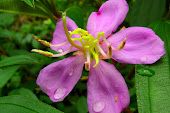





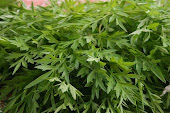

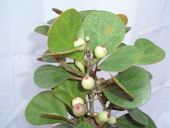



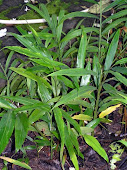
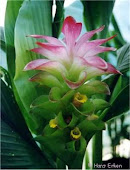


Post a Comment